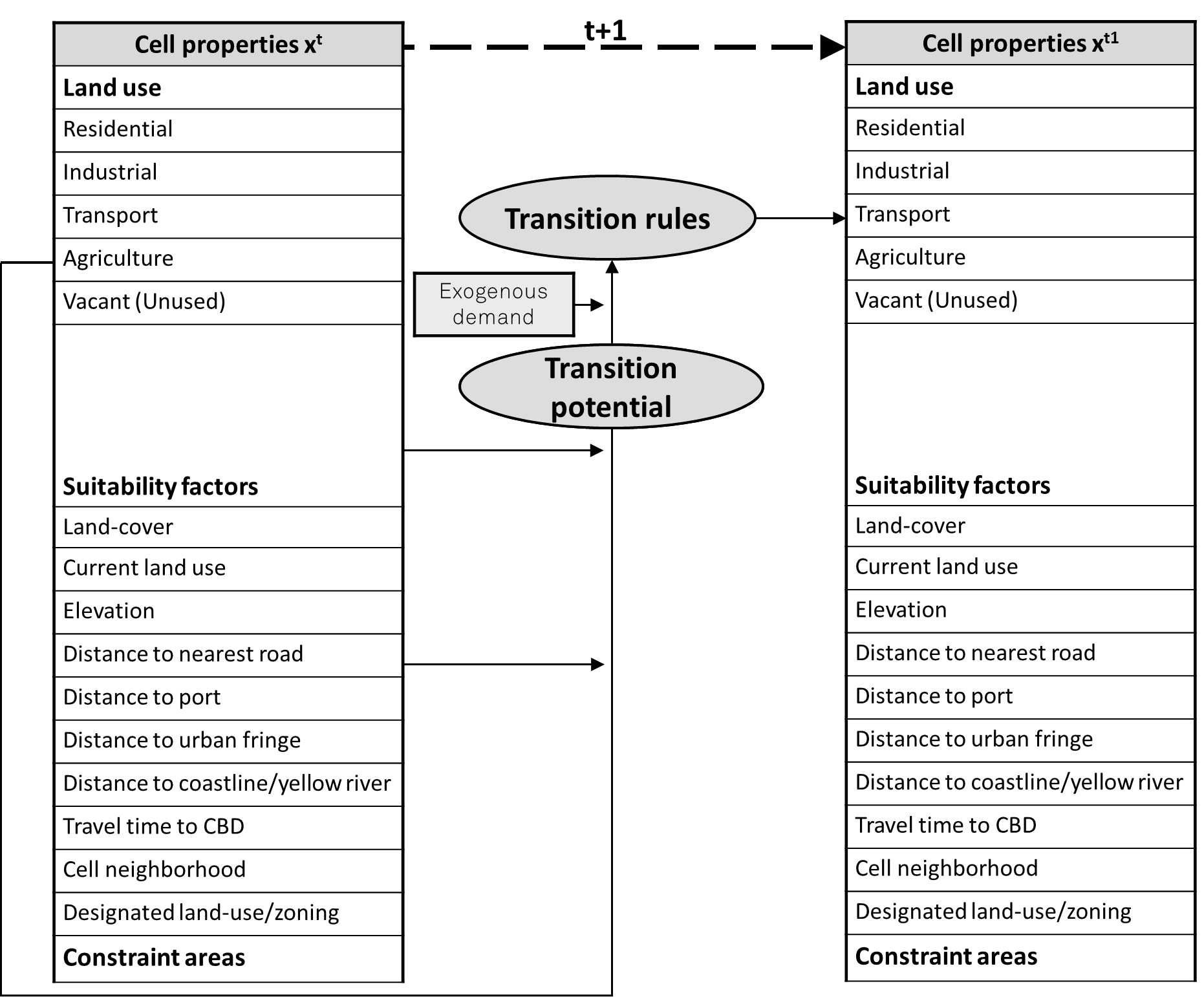Conclusions from the analysis of land-use dynamics and draft conception of CA model
The objective of the preparatory work (literature review) and the field work (interviews, excursions) was the identification of characteristic settlement structures and determinants and trends of urban and regional development in order to adequately consider these for the development of the CA model (cellular automaton, CA).
Conclusions: In the first project phase it was important to understand land-use dynamics and their determinants in the Yellow River Delta or Dongying region, respectively. As a result of this first phase, the initial hypothesis was confirmed that
the planning system and the implementation of plans is the major determinant for the development of cities and the region. The city region of Dongying shows high development dynamics which are not only driven by population growth or migration but primarily by economic dynamics and the implementation of official development plans such as the Yellow River Delta Development Plan or the Masterplan for Dongying. The YRD Development Plan promotes Dongying as a „high efficiency economic ecological zone“, and specifies the development patterns in their spatial or territorial characteristics.
Draft conception of CA model: The planned CA model for the Yellow River Delta was originally developed and implemented in another geographic context (Africa). It will be further developed for its application in the DELIGHT project. Due to the fact that development patterns of settlements and infrastructure follow different rationales and are determined by different factors, there is the need to fundamentally modify the CA model. This especially relates to the role of development policies and planning which hardly played a role in the mainly informal development in the previous African case study where the CA model was first implemented. The following figure shows the draft concept of the CA model, based on the findings from the analysis of land-use dynamics.
An essential feature of CA-based models is the consideration of so-called neighborhood effects. At the same time this makes CA-models highly interesting for modeling spatial processes like urban and regional dynamics (White et al., 1997). Since CA models are particularly suited to model diffusion-like development processes they are especially interesting for applications in meso-scale development dynamics as can be observed most notably in rapidly growing agglomerations nowadays found in developing and emerging countries.

Fig.1: Patterns of land-use dynamics

Fig.2: Draft conception of CA model




